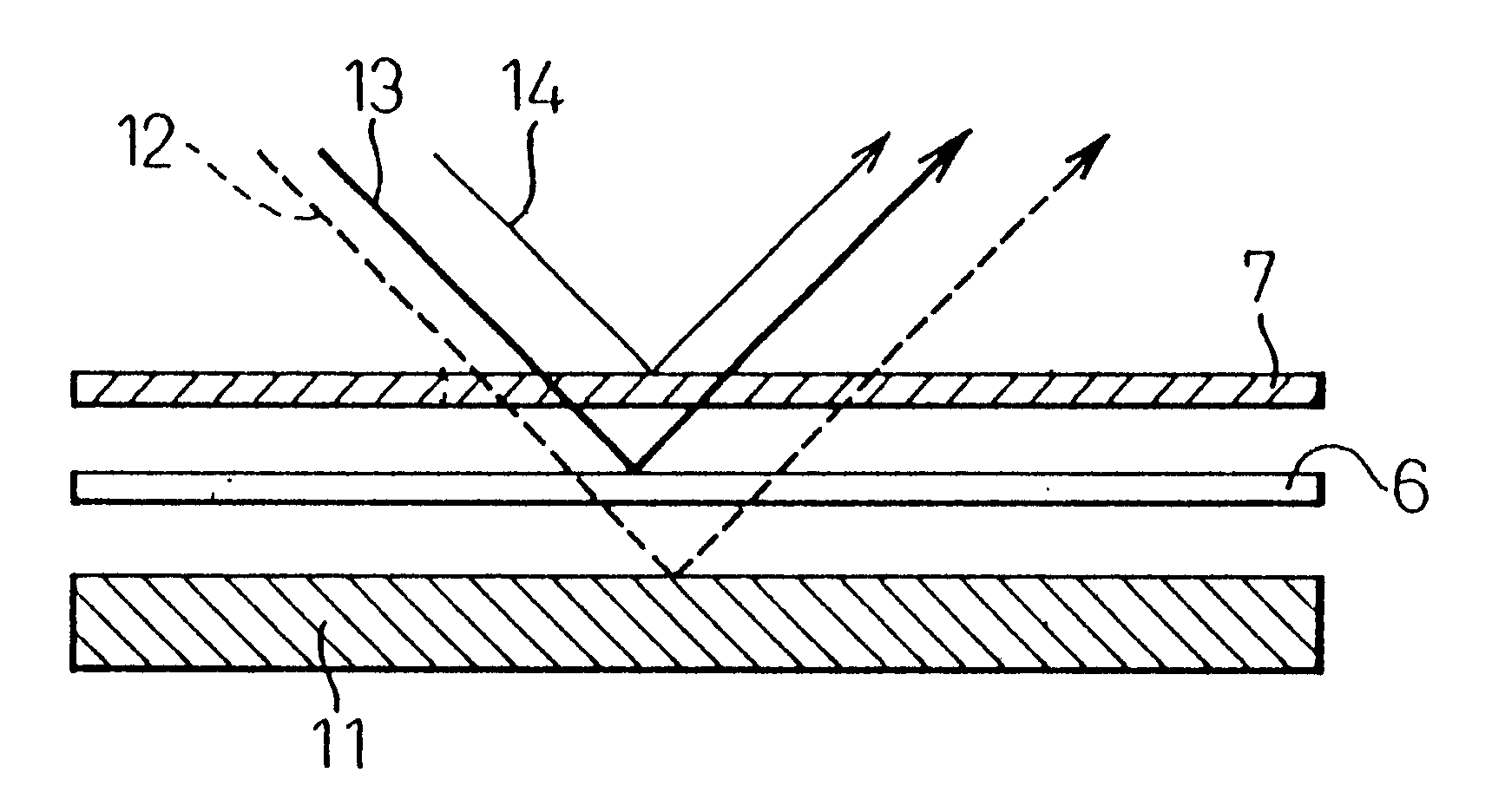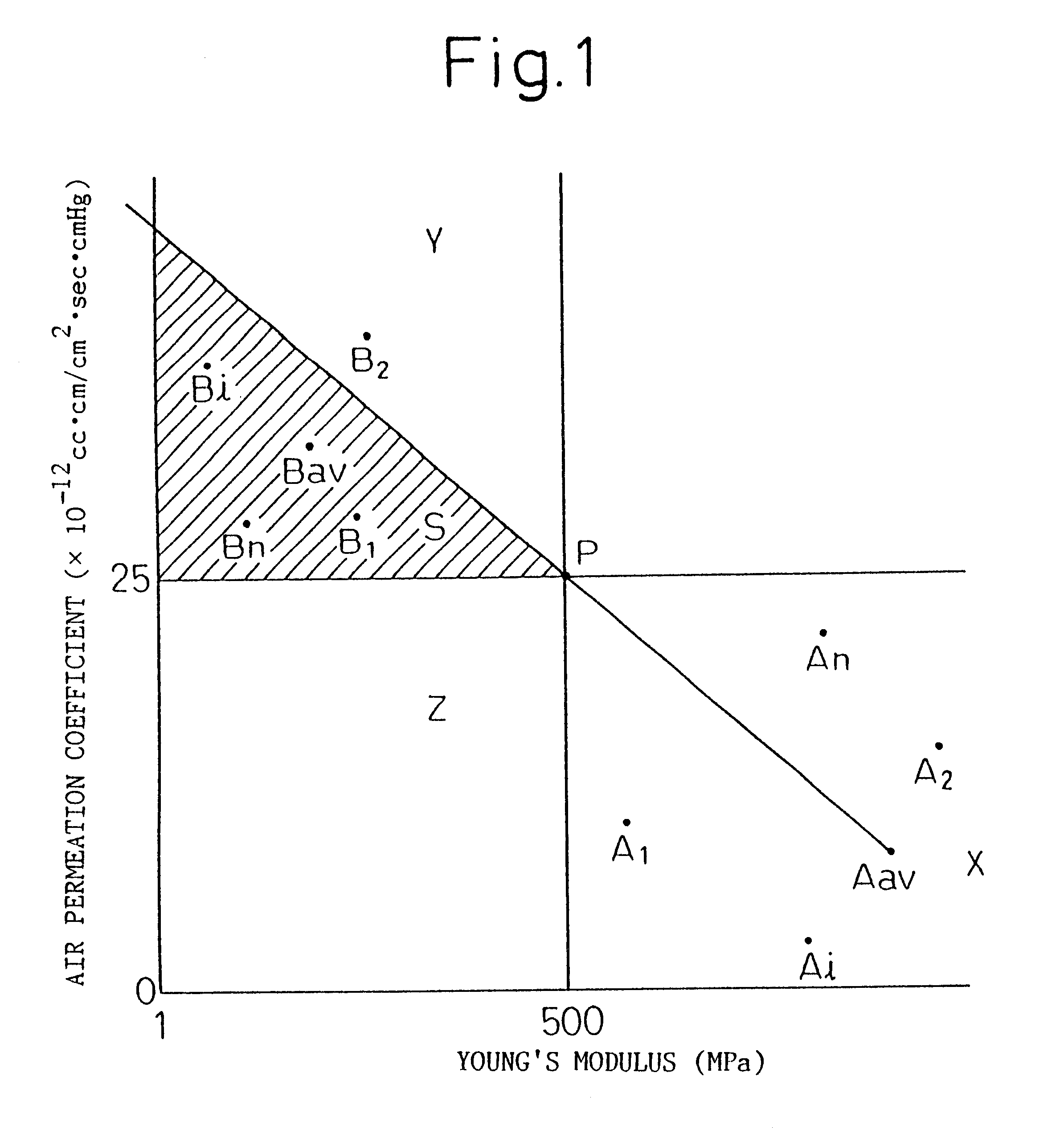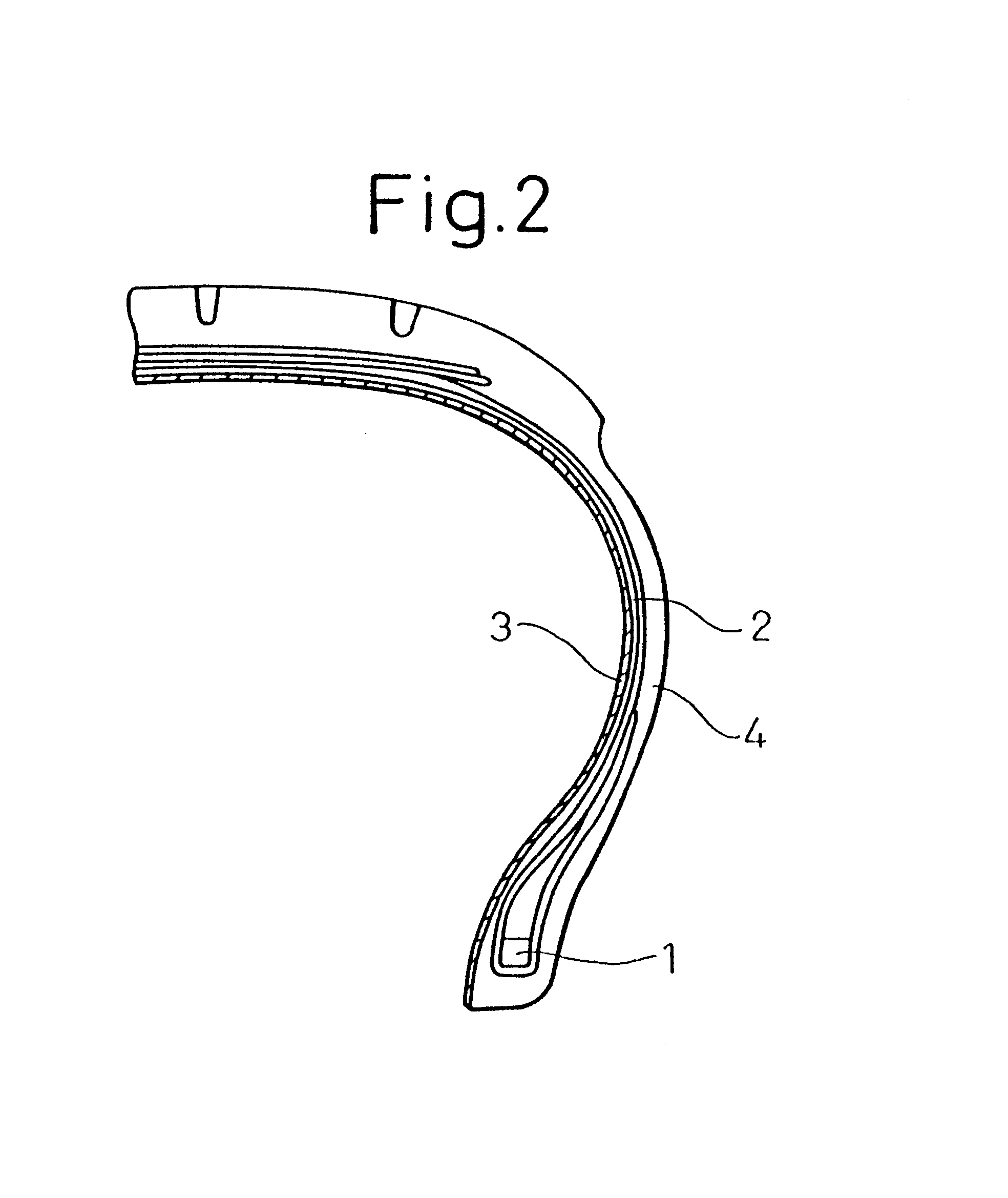Pneumatic tire with colored thermoplastic elastomer layer adjacent a black-concealing layer
a thermoplastic elastomer and pneumatic tire technology, applied in the field of pneumatic tires, can solve the problems of inferior moisture resistance (or water resistance) increase the rolling resistance, and increase the friction resistance of the inner liner layer, and achieve superior gas permeation prevention properties, high elastomer ratio, and abundant flexibility
- Summary
- Abstract
- Description
- Claims
- Application Information
AI Technical Summary
Benefits of technology
Problems solved by technology
Method used
Image
Examples
examples i
Examples I-1 to I-3 and Comparative Examples I-1 to I-5
The elastomers and cross-linking agent shown in the following Table I-1 were previously mixed in a Banbury mixer, sheeted by rubber use rolls to 2 mm, then pelletized by a rubber use pelletizer and then used as the elastomer components, not including the cross-linking agent, for twin-screw mixing with the next thermoplastic resin component.
The pellets of the thermoplastic resin component shown in Table I-2 and the above obtained pellets of the elastomer component were dispersed and mixed with each other by a twin-screw kneader / extruder with the thermoplastic resin component added from the first charging port and the elastomer component added from the second charging port. The temperature at the time of mixing was controlled to a temperature from the melting temperature of the thermoplastic resin +40.degree. C. and the shear rate was controlled to 1150 sec.sup.-1. The cross-linking agent of the elastomer component was adjusted an...
examples ii
The methods of evaluation used in these Examples were as shown below:
Here, the melt viscosity means the melt viscosity of any temperature or component at the time of mixing. The melt viscosity of each polymer material is dependent on the temperature, the shear rate (sec.sup.-1), and the shear stress, so the stress and shear rate of the polymer material at any temperature in the molten state capable of flowing through a capillary, in particular, the temperature region at the time of mixing, are measured and the melt viscosity is measured by the following formula (6):
.eta.=.sigma. / .gamma. (where, .sigma.: shear stress, .gamma.: shear ratio) (6)
Note that, the melt viscosity is measured by using a Capillary Rheometer Capillograph 1C made by Toyo Seiki. Further, as the orifice, one of a diameter of 1 mm and length of 10 mm was used.
Method of Measurement of Young's Modulus and Elongation of Film
This was performed based on JIS K6251 "Test Method for Tensile Properties of Vulc...
example ii-18
In this Example, the explanation is made of the fact that, in the low permeability thermoplastic elastomer composition obtained in the present invention, due to the three-way morphology of the multiple-component system blend of the rubber / matrix resin / barrier resin, the rubber was finely dispersed and the barrier resin formed a flat layer structure.
For direct observation of the morphology, use was made of an optical microscope (Nikon MICRORHOT-FXA) and a transmission electron microscope (Hitachi Model H-800). Samples prepared in the following way were directly observed along the Z-axial section, X-axial section, and Y-axial section at .times.200 magnifications. Further, the X-axial section was directly observed at .times.6000 magnification. The results are shown in FIGS. 9(a), 9(b), and 9(c) and FIGS. 10(a), 10(b), 10(c), and 10(d).
Preparation of Samples: As the first step batch, modified butyl rubber / N11 was mixed by a twin-screw kneader / extruder, then pellets of the MXD6 of the ba...
PUM
 Login to View More
Login to View More Abstract
Description
Claims
Application Information
 Login to View More
Login to View More - R&D
- Intellectual Property
- Life Sciences
- Materials
- Tech Scout
- Unparalleled Data Quality
- Higher Quality Content
- 60% Fewer Hallucinations
Browse by: Latest US Patents, China's latest patents, Technical Efficacy Thesaurus, Application Domain, Technology Topic, Popular Technical Reports.
© 2025 PatSnap. All rights reserved.Legal|Privacy policy|Modern Slavery Act Transparency Statement|Sitemap|About US| Contact US: help@patsnap.com



